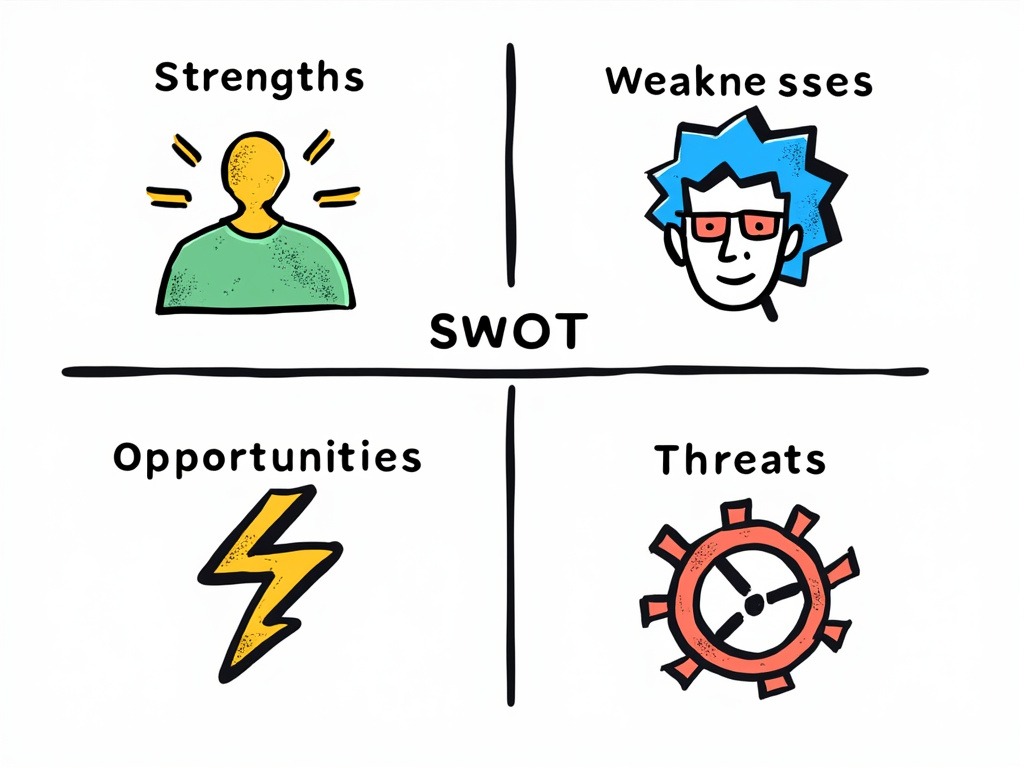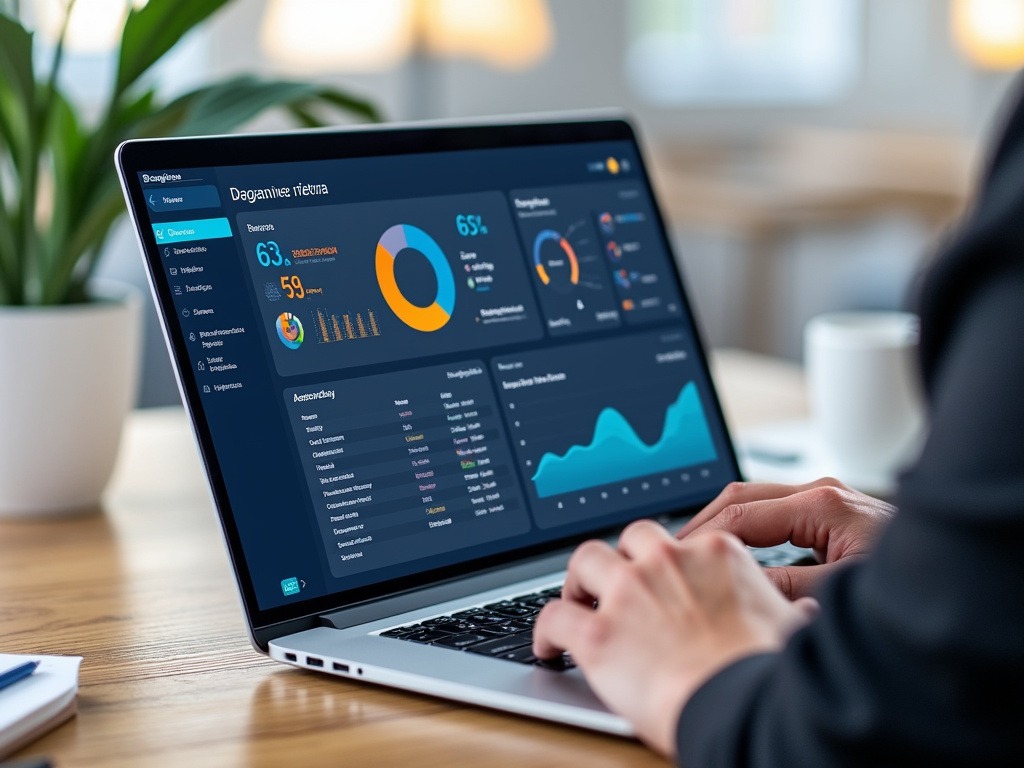In today’s hyper-competitive business landscape, understanding your rivals is not just advantageous—it’s essential. Mastering competitive analysis enables businesses to uncover valuable insights, strategize effectively, and ultimately outperform their rivals. This comprehensive guide delves into the intricacies of competitive analysis, equipping you with the tools and knowledge to stay ahead in the market.
Key Takeaways
- Fundamentals of Competitive Analysis: Grasp the importance and basics of competitive analysis in shaping business strategies.
- Step-by-Step Methods: Learn systematic approaches to conducting thorough competitor analysis and market research.
- Tools and Frameworks: Utilize SWOT Analysis, Porter’s Five Forces, and other frameworks to evaluate competitors comprehensively.
- Strategic Development: Develop actionable strategies to gain a competitive advantage and outperform rivals.
- Continuous Monitoring: Implement strategies for ongoing market monitoring and adaptation to maintain your edge.
Introduction to Competitive Analysis
What Is Competitive Analysis and Why It Matters
Competitive analysis is the process of identifying your business competitors and evaluating their strategies to determine their strengths and weaknesses relative to your own. This form of competitor analysis is crucial for business strategy as it provides insights into the competitive landscape, enabling companies to make informed decisions and strategically position themselves in the market.
Understanding the Basics of Competitive Intelligence
Competitive intelligence involves gathering and analyzing information about your competitors’ products, sales, and marketing strategies. This intelligence is vital for understanding market competition and identifying opportunities to outperform your rivals.
The Role of Competitive Analysis in Business Strategy
Integrating competitive analysis into your strategic planning allows you to anticipate market shifts, respond proactively to competitor moves, and identify areas where you can achieve a competitive advantage. It helps in refining your market positioning and ensuring your strategies are aligned with market demands and competitor actions.

Key Components of Competitive Analysis
Essential Elements of a Comprehensive Competitor Analysis
A thorough competitor analysis encompasses several key components, each providing critical insights into different aspects of your competitors and the market environment.
Conducting a SWOT Analysis on Competitors
A SWOT Analysis (Strengths, Weaknesses, Opportunities, Threats) is a fundamental tool in competitive analysis. By evaluating these four elements, you can identify what your competitors excel at, where they falter, potential market opportunities they might exploit, and threats they pose to your business.
Applying Porter’s Five Forces for Market Insight
Porter’s Five Forces is another essential framework that assesses the competitive forces within an industry: the threat of new entrants, the bargaining power of suppliers, the bargaining power of buyers, the threat of substitute products or services, and existing competitive rivalry. This analysis helps in understanding the overall industry competitiveness and the factors influencing market dynamics.
Market Research Techniques for Competitive Analysis
Effective Market Research Techniques to Analyze Competitors
Market research is the backbone of effective competitive analysis. Employing various techniques ensures a comprehensive understanding of your competitors and the market landscape.
Utilizing Market Segmentation for Deeper Insights
Market segmentation involves dividing your market into distinct groups of consumers with similar needs or characteristics. This technique allows you to analyze how competitors target different segments, enabling you to identify underserved segments and tailor your strategies accordingly.
Leveraging Data Analytics in Competitive Intelligence
Data analytics plays a pivotal role in competitive intelligence by providing actionable insights through the analysis of large data sets. Tools like business intelligence tools and data analytics platforms can help you track competitor performance, market trends, and consumer behavior, enhancing the accuracy and depth of your competitive analysis.

Identifying Your Competitors
How to Identify Your Main Competitors in the Market
Identifying your competitors is the first step in competitor analysis. Competitors can be direct, offering similar products or services, or indirect, providing alternatives that fulfill the same customer needs.
Direct vs. Indirect Competitors: Understanding the Difference
Direct competitors are those offering the same products or services to the same target market, while indirect competitors provide different products or services that satisfy the same customer needs. Understanding this distinction helps in mapping the competitive landscape more accurately.
Tools for Mapping Your Competitors in the Market
Several tools can assist in competitor mapping, including online resources like industry reports, business intelligence tools, and competitor profiling software. These tools help visualize your position relative to competitors and identify gaps and opportunities in the market.
Analyzing Competitor Strengths and Weaknesses
Assessing Competitor Strengths and Weaknesses Effectively
Evaluating your competitors’ strengths and weaknesses provides a clear picture of where they stand in the market and where your business can capitalize.
Building a Competitor Profiling Framework
A competitor profiling framework involves collecting and organizing data on competitors’ products, services, marketing strategies, financial performance, and operational capabilities. This structured approach ensures a comprehensive analysis of each competitor.
Using SWOT Matrix to Evaluate Competitors
The SWOT Matrix helps in systematically assessing each competitor’s strengths, weaknesses, opportunities, and threats. This matrix facilitates a side-by-side comparison, highlighting areas where your business can leverage its strengths against competitors’ weaknesses.

Understanding Competitor Strategies
How to Assess Competitor Marketing and Business Strategies
Understanding your competitors’ strategies is crucial for identifying how they achieve their market position and what you can do to surpass them.
Analyzing Competitor Pricing Strategies
Competitor pricing strategies can significantly impact your market positioning. By analyzing how competitors price their products or services, you can identify pricing gaps, adjust your pricing strategy, and improve your value proposition.
Evaluating Competitor Marketing Campaigns
Assessing competitor marketing campaigns provides insights into their promotional strategies, target audience engagement, and messaging effectiveness. This evaluation helps in refining your own marketing efforts to better resonate with your target market.
Utilizing Benchmarking in Competitive Analysis
Competitive Benchmarking Techniques to Improve Business Performance
Benchmarking involves comparing your business processes and performance metrics against industry standards or competitors to identify areas for improvement.
Industry Benchmarking: Setting Standards for Success
Industry benchmarking helps in understanding the best practices and performance standards within your industry. By measuring your performance against these benchmarks, you can identify gaps and implement strategies to achieve similar or superior performance levels.
Competitive Benchmarking Methods for Businesses
Competitive benchmarking methods include identifying key performance indicators (KPIs), analyzing competitor performance data, and conducting gap analysis. These methods provide a clear framework for improving your business processes and overall performance.
Leveraging Business Intelligence Tools
Best Business Intelligence Tools for Competitive Analysis
Business intelligence tools are essential for collecting, analyzing, and visualizing data related to your competitors and the market.
Top Tools for Conducting Competitor Analysis
Popular tools for competitor analysis include SEMrush, Ahrefs, SimilarWeb, and SpyFu. These platforms offer comprehensive data on competitors’ online presence, keyword strategies, traffic sources, and more, enabling you to gain valuable insights into their digital strategies.
How to Use Data Analytics for Competitor Insights
Data analytics tools like Google Analytics, Tableau, and Power BI can help you process and interpret large data sets. By analyzing this data, you can uncover trends, measure competitor performance, and make data-driven decisions to enhance your competitive strategy.

Developing a Competitive Strategy
Creating a Competitive Strategy Based on Your Analysis
Developing a competitive strategy involves using the insights gained from your competitive analysis to formulate plans that leverage your strengths and address your competitors’ weaknesses.
Building a Competitive Advantage Through Analysis
A competitive advantage is what sets your business apart from competitors. By identifying your unique strengths and effectively addressing competitors’ weaknesses, you can create a sustainable advantage that attracts and retains customers.
Strategic Initiatives to Outperform Business Rivals
Implementing strategic initiatives based on your analysis can help you outmaneuver competitors. These initiatives may include product innovation, market expansion, enhanced customer service, or strategic partnerships, all aimed at strengthening your market position.
Market Positioning Strategies
Market Positioning Strategies Informed by Competitor Analysis
Market positioning involves defining how your product or service is perceived in the minds of consumers relative to competitors. Effective positioning strategies ensure your offerings stand out in a crowded market.
Differentiating Your Brand from Competitors
Brand differentiation is key to establishing a unique market position. By highlighting what makes your brand unique—whether it’s superior quality, innovative features, or exceptional customer service—you can attract customers away from competitors.
Positioning Your Product for Maximum Impact
Product positioning entails aligning your product’s features and benefits with the needs and preferences of your target market. Effective positioning ensures that your product resonates with customers and meets their expectations better than competitors’ offerings.
Identifying Market Opportunities
How to Identify Market Opportunities Through Competitive Analysis
Market opportunity analysis involves identifying unmet needs or gaps in the market that your business can exploit to gain a competitive edge.
Spotting Untapped Market Segments
By analyzing competitors’ focus areas, you can identify untapped market segments that are underserved or overlooked. Targeting these segments can provide significant growth opportunities and reduce direct competition.
Leveraging Competitive Insights to Find Opportunities
Competitive insights derived from your analysis can help you uncover trends, anticipate market shifts, and identify emerging opportunities. Leveraging these insights allows you to proactively address market demands and stay ahead of competitors.

Monitoring and Updating Your Competitive Analysis
Strategies for Ongoing Competitive Monitoring
Competitive monitoring is an ongoing process that ensures your competitive analysis remains current and relevant in a dynamic market environment.
Implementing Continuous Competitive Intelligence
Continuous competitive intelligence involves regularly collecting and analyzing data on competitors and market trends. This approach ensures you stay informed about competitors’ actions and market changes, enabling timely strategic adjustments.
Adapting to Market Dynamics to Stay Ahead
Adapting to market dynamics requires flexibility and responsiveness. By continuously monitoring the market and your competitors, you can quickly adapt your strategies to maintain your competitive advantage and address new challenges effectively.
Case Studies of Successful Competitive Analysis
Real-World Examples of Outperforming Rivals Through Analysis
Examining real-world competitive success stories provides valuable lessons on how effective competitive analysis can lead to significant business achievements.
Case Study 1: How Company X Leveraged SWOT Analysis
Company X utilized a comprehensive SWOT Analysis to identify their strengths in product innovation and weaknesses in customer service. By addressing these weaknesses and leveraging their strengths, they were able to enhance their market position and outperform key competitors.
Case Study 2: Utilizing Porter’s Five Forces to Gain Market Share
Company Y applied Porter’s Five Forces to understand the competitive pressures in their industry. This analysis helped them identify opportunities to reduce supplier power and differentiate their offerings, resulting in increased market share and improved profitability.
Common Mistakes in Competitive Analysis and How to Avoid Them
Avoiding Pitfalls in Your Competitor Analysis Process
While conducting competitive analysis, businesses often encounter common mistakes that can undermine the effectiveness of their efforts.
Overlooking Indirect Competitors
One prevalent mistake is overlooking indirect competitors. These competitors may not offer the same products or services but still fulfill similar customer needs. Ignoring them can result in missing out on critical market insights and opportunities.
Relying Too Heavily on Quantitative Data
While quantitative data is essential, relying solely on numbers without considering qualitative factors such as customer satisfaction, brand loyalty, and market perception can lead to an incomplete analysis. A balanced approach that includes both quantitative and qualitative data provides a more comprehensive understanding of the competitive landscape.

Tools and Resources for Mastering Competitive Analysis
Top Tools and Resources to Enhance Your Competitive Analysis
Leveraging the right tools and resources is crucial for conducting effective competitive analysis. These tools facilitate data collection, analysis, and visualization, making the process more efficient and insightful.
Software Solutions for Comprehensive Competitor Research
There are numerous software solutions designed for competitor research, including SEMrush, Ahrefs, SimilarWeb, SpyFu, and Tableau. These platforms offer features like competitor keyword analysis, traffic monitoring, backlink analysis, and market trend tracking, providing a holistic view of your competitors’ online activities.
Online Resources and Templates for Competitive Analysis
Online resources such as industry reports, market research publications, and competitive analysis templates can significantly aid your analysis process. Templates offer structured formats for collecting and organizing data, ensuring consistency and comprehensiveness in your competitive analysis efforts.
Frequently Asked Questions About Competitive Analysis
What is the difference between competitive analysis and SWOT analysis?
Competitive analysis focuses on evaluating your competitors’ strategies, strengths, and weaknesses, while a SWOT analysis assesses your own business’s Strengths, Weaknesses, Opportunities, and Threats. Both tools are complementary, with competitive analysis providing insights that inform your SWOT analysis.
How often should I conduct a competitive analysis?
It’s recommended to conduct a competitive analysis at least once a year or whenever there are significant market changes, such as the entry of new competitors, shifts in consumer behavior, or technological advancements. Continuous competitive intelligence ensures your analysis remains up-to-date and relevant.
What are the best tools for competitor profiling?
Some of the best tools for competitor profiling include SEMrush, Ahrefs, SimilarWeb, SpyFu, and Crunchbase. These tools provide comprehensive data on competitors’ online presence, keyword strategies, traffic sources, and financial performance.
How can competitive analysis help in strategic planning?
Competitive analysis provides valuable insights into the market landscape, competitor strategies, and industry trends. These insights inform your strategic planning, enabling you to develop strategies that leverage your strengths, address your weaknesses, and capitalize on market opportunities to gain a competitive advantage.
What are common mistakes to avoid in competitor analysis?
Common mistakes include overlooking indirect competitors, relying too heavily on quantitative data without considering qualitative factors, and failing to update your analysis regularly. Avoiding these pitfalls ensures a more accurate and comprehensive understanding of the competitive landscape.

Competitive Analysis Framework Comparison
Comparative Overview of Popular Competitive Analysis Frameworks
| Framework | Description | Key Benefits | Best For |
|---|---|---|---|
| SWOT Analysis | Evaluates strengths, weaknesses, opportunities, threats | Simple and versatile | General business use |
| Porter’s Five Forces | Analyzes industry competitiveness | Comprehensive industry insight | Strategic planning and analysis |
| Benchmarking | Compares business processes and performance metrics | Identifies best practices and performance gaps | Performance improvement |
| PESTEL Analysis | Assesses external factors: Political, Economic, Social, Technological, Environmental, Legal | Holistic view of external environment | Market entry strategy |
Conclusion
Achieving Success Through Mastery of Competitive Analysis
Mastering competitive analysis is a pivotal component of achieving business success. By thoroughly understanding your competitors, leveraging the right tools and frameworks, and continuously monitoring the market, you can develop strategies that not only match but surpass your rivals.
Implementing the insights and techniques discussed in this guide will empower you to make informed decisions, seize market opportunities, and maintain a competitive edge in an ever-evolving business landscape. Embrace competitive analysis as an ongoing strategic practice, and watch your business thrive by consistently outperforming your rivals.


